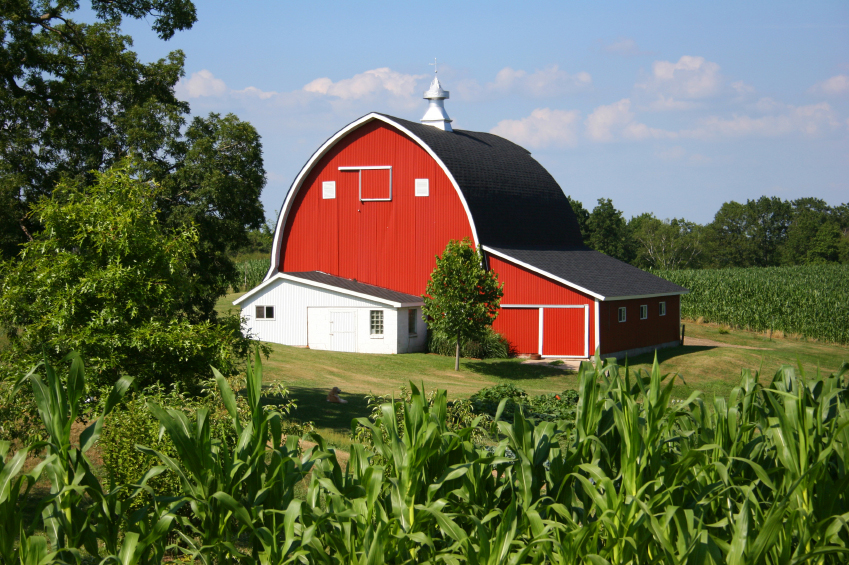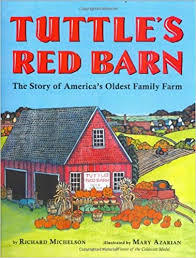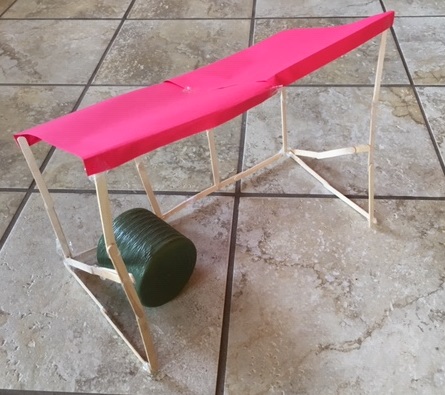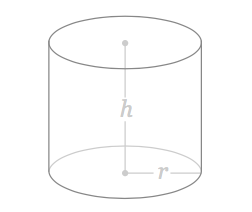Let's Raise a Barn
Students explore the benefits and functions of different types of barns and use problem-solving skills to build a model of a hay barn that meets specific requirements.
Background
Lesson Activities
Recommended Companion Resources
Credits
Author
Sunshine Shanks
Sources
- https://www.motherearthnews.com/homesteading-and-livestock/the-history-of-barns-in-america-zbcz1512
- https://tailormadebeef.com/fun-farm-facts-why-are-barns-red/
Standards
Texas Content Area Standards
-
ELA: 3.110.5.b.6
Comprehension skills: listening speaking, reading, writing and thinking using multiple texts. The student uses metacognitive skills to both develop and deepen comprehension of increasingly complex texts.
- ELA: 3.110.5.b.6.E: The student is expected to make connections to personal experiences, ideas in other texts, and society.
- ELA: 3.110.5.b.6.H: synthesize information to create new understanding
-
ELA: 4.110.6.b.1
Developing and sustaining foundational language skills: listening, speaking, discussion, and thinking- oral language. The students develops oral language through listening, speaking, and discussion.
- ELA: 4.110.6.b.1.D: work collaboratively with others to develop a plan of shared responsibilities
- ELA: 4.110.6.b.1.A: listen actively, ask relevant questions to clarify information, and make pertinent comments
-
Social Studies: 3.113.14.c.4
Geography. The student understands the concepts of location, distance, and direction on maps and globes. The student is expected to:
- Social Studies: 3.113.14.c.14.D: interpret and create visuals, including graphs, charts, tables, timelines, illustrations, and maps
-
ELA: 5.110.7.b.13
Inquiry and research: listening, speaking, reading, writing, and thinking using multiple texts. The student engages in both short-term and sustained recursive inquiry processes for a variety of purposes.
- ELA: 5.110.7.b.13.E: demonstrate understanding of information gathered
-
Math: 4.111.6.b.8
Geometry and measurements. The student applies mathematical process standards to select appropriate customary and metric units, strategies, and tools to solve problems involving measurement.
- Math: 4.111.6.b.8.C: solve problems that deal with measurements of length, intervals of time, liquid volumes, mass, and money using addition, subtraction, multiplication, or division as appropriate
-
Social Studies: 3.113.14.c.16
Social studies skills. The student uses problem-solving and decision-making skills, working independently and with others. The student is expected to:
- Social Studies: 3.113.14.c.16.B: use problem-solving and decision-making processes to identify a problem, gather information, list and consider options, consider advantages and disadvantages, choose and implement a solution, and evaluate the effectiveness of the solution
-
Social Studies: 4.113.15.c.19
Social studies skills. The student applies critical-thinking skills to organize and use information acquired from a variety of valid sources, including technology. The student is expected to:
- Social Studies: 4.113.15.c.19.D: organize and interpret information in outlines, reports, databases, and visuals, including graphs, charts, timelines, and maps
-
Social Studies: 4.113.15.c.22
Social studies skills. The student uses problem-solving and decision-making skills, working independently and with others. The student is expected to:
- Social Studies: 4.113.15.c.22.B: use problem-solving and decision-making processes to identify a problem, gather information, list and consider options, consider advantages and disadvantages, choose and implement a solution, and evaluate the effectiveness of the solution
-
Social Studies: 5.113.16.c.25
Social studies skills. The student communicates in written, oral, and visual forms. The student is expected to:
- Social Studies: 5.113.16.c.25.D: create written and visual material such as journal entries, reports, graphic organizers, outlines, and bibliographies
-
Social Studies: 5.113.16.c.26
Social studies skills. The student uses problem-solving and decision-making skills, working independently and with others. The student is expected to:
- Social Studies: 5.113.16.c.26.B: use problem-solving and decision-making processes to identify a problem, gather information, list and consider options, consider advantages and disadvantages, choose and implement a solution, and evaluate the effectiveness of the solution
-
ELA: 3.110.5.b.1
Developing and sustaining foundational language skills: listening, speaking, discussion, and thinking--oral language. The student develops oral language through listening, speaking, and discussion. The student is expected to:
- ELA: 3.110.5.b.1.A: listen actively, ask relevant questions to clarify information, and make pertinent comments
- ELA: 3.110.5.b.1.D: work collaboratively with others by following agreed-upon rules, norms, and protocols
-
ELA: 3.110.5.b.7
Response skills: listening, speaking, reading, writing, and thinking using multiple texts. The student responds to an increasingly challenging variety of sources that are read, heard, or viewed. The student is expected to:
- ELA: 3.110.5.b.7.E: interact with sources in meaningful ways such as notetaking, annotating, freewriting, or illustrating
-
ELA: 3.110.5.b.13
Inquiry and research: listening, speaking, reading, writing, and thinking using multiple texts. The student engages in both short-term and sustained recursive inquiry processes for a variety of purposes. The student is expected to:
- ELA: 3.110.5.b.13.E: demonstrate understanding of information gathered
-
ELA: 4.110.6.b.6
Comprehension skills: listening, speaking, reading, writing, and thinking using multiple texts. The student uses metacognitive skills to both develop and deepen comprehension of increasingly complex texts. The student is expected to:
- ELA: 4.110.6.b.6.E: make connections to personal experiences, ideas in other texts, and society
- ELA: 4.110.6.b.6.H: synthesize information to create new understanding
-
ELA: 4.110.6.b.7
Response skills: listening, speaking, reading, writing, and thinking using multiple texts. The student responds to an increasingly challenging variety of sources that are read, heard, or viewed. The student is expected to:
- ELA: 4.110.6.b.7.E: interact with sources in meaningful ways such as notetaking, annotating, freewriting, or illustrating
-
ELA: 4.110.6.b.13
Inquiry and research: listening, speaking, reading, writing, and thinking using multiple texts. The student engages in both short-term and sustained recursive inquiry processes for a variety of purposes. The student is expected to:
- ELA: 4.110.6.b.13.E: demonstrate understanding of information gathered
-
ELA: 5.110.7.b.1
Developing and sustaining foundational language skills: listening, speaking, discussion, and thinking--oral language. The student develops oral language through listening, speaking, and discussion. The student is expected to:
- ELA: 5.110.7.b.1.A: listen actively to interpret verbal and non-verbal messages, ask relevant questions, and make pertinent comments
- ELA: 5.110.7.b.1.D: work collaboratively with others to develop a plan of shared responsibilities
-
ELA: 5.110.7.b.6
Comprehension skills: listening, speaking, reading, writing, and thinking using multiple texts. The student uses metacognitive skills to both develop and deepen comprehension of increasingly complex texts. The student is expected to:
- 5.110.7.b.6.E: make connections to personal experiences, ideas in other texts, and society
- ELA: 5.110.7.b.6.H: synthesize information to create new understanding
-
ELA: 5.110.7.b.7
Response skills: listening, speaking, reading, writing, and thinking using multiple texts. The student responds to an increasingly challenging variety of sources that are read, heard, or viewed. The student is expected to:
- ELA: 5.110.7.b.7.E: interact with sources in meaningful ways such as notetaking, annotating, freewriting, or illustrating
-
Math: 5.111.7.b.4
Algebraic reasoning. The student applies mathematical process standards to develop concepts of expressions and equations. The student is expected to:
- 111.7.b.4.H: represent and solve problems related to perimeter and/or area and related to volume

 Discuss with students that barns serve many purposes for farmers. Barns can be used to shelter livestock, to produce a specific farm product, to store farm products and equipment, or for a combination of purposes. In this story, the author takes readers on a journey through time of how one family grew their farm with the changing times and how they adapted the function of their barn to their farming needs.
Discuss with students that barns serve many purposes for farmers. Barns can be used to shelter livestock, to produce a specific farm product, to store farm products and equipment, or for a combination of purposes. In this story, the author takes readers on a journey through time of how one family grew their farm with the changing times and how they adapted the function of their barn to their farming needs.  as partners, or in small groups to design and construct their models. Provide each student, partnership, or group with the following materials:
as partners, or in small groups to design and construct their models. Provide each student, partnership, or group with the following materials:
 that will fit inside their hay barn model. First, students will need to find their barn volume (length x width x height). Then they find the bale volume, which is the volume of a cylinder (h x
that will fit inside their hay barn model. First, students will need to find their barn volume (length x width x height). Then they find the bale volume, which is the volume of a cylinder (h x